Enjoying winter: art or science?
- Tags:
- Wildlife
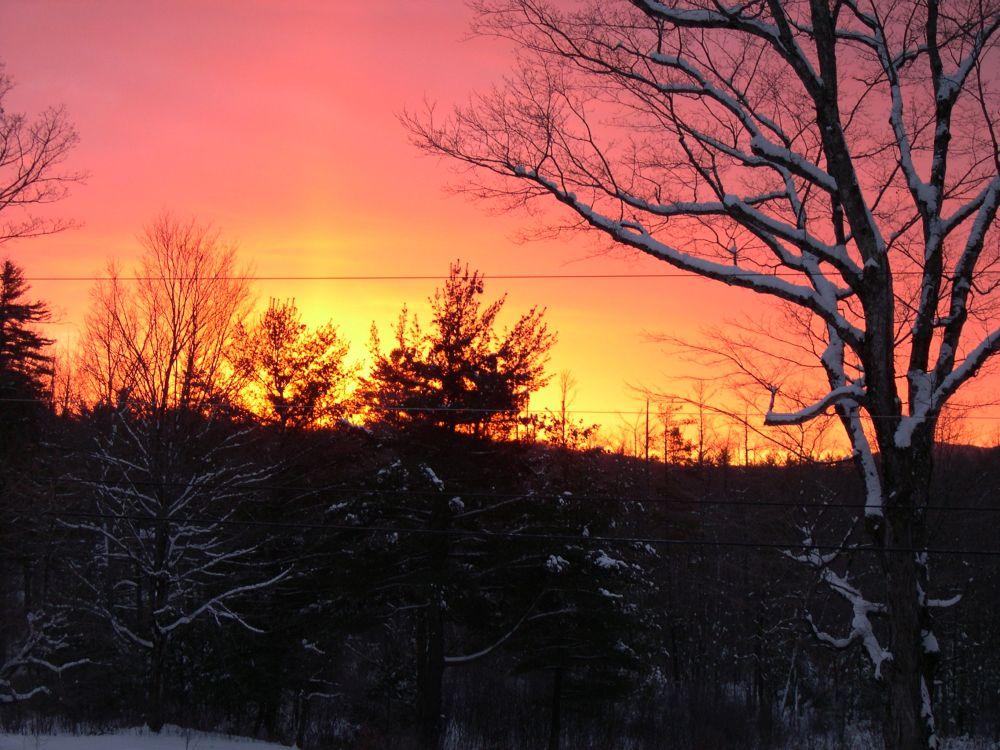
The coldest hours as winter sunrise illuminates fresh tracks in the woods. Oblique light is perfect in early morning when purple yields to pink and orange across the eastern sky.
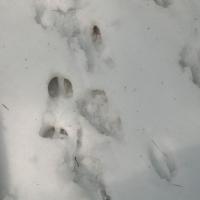
PREDAWN: Five-below zero at 5 a.m. I hear deer hooves pawing through the oak leaves beyond the small pool of light from the porch. Indoors on television, cold-weather news stories focus on conditions at the summit of Mount Washington: ridiculous low wind chills in double digits below zero. The invigorating and slight crazy notion of heading out into the woods during the coldest hours of the year is tempting.
What’s happening in my familiar backyard woods? Who else is out and about? Only one way to find out … The overwhelming sensation of cold is accompanied by silence that’s nearly deafening, like ringing in my ears. I can almost hear my heartbeat. I see my breath. Time to move and keep moving! The thin white crescent of the waning January moon is sinking into dark hemlocks and bare oak branches like mercury pooling at the bottom of the thermometer. The moon casts thin white light with no implied warmth.
The silence is broken by a resounding boom of ice thickening on a pool in the river. It sounds as if a beast were trapped beneath the surface. The faint purr of the waterfall downriver is now absent. Faint noises are swallowed by the cold. Dawn is breaking and the deer are retreating uphill to the shelter of hemlocks for the day. There’s a startling “pop” of a tree freezing as water expands and ruptures cambium cells.
The popping trees sound is characteristic of bitter winter nights when tree plumbing is vulnerable. Water freezes in tissues beneath the bark, creating frost crack wounds visible years later as vertical scars. Kermit was right: “It’s not easy being green.”
Where are Kermit’s cousins now? Frogs lie buried along with newts and turtles deep in river mud. Above them, dormant fish scull silently beneath thickening panes of clear black ice. The entire soundscape of summer is silent: no croaking frogs, chirping crickets, singing birds, flowing water or wind combing leaves. No barking dogs or faint music drifting from open screen windows of houses in the village. No rumble of motorcycle pipes or whine of tires on bare asphalt. The only sounds are water freezing and dry snow squeaking underfoot. Time to keep moving lest I freeze, too.
Wildlife-tracking conditions are excellent. A light dusting of snow from brief squalls created an ideal canvas. Oblique light is perfect in early morning when purple yields to pink and orange across the eastern sky.
Our woodlot is full of mature red oak canopies arching over a hemlock understory on a south-facing hillside. A bumper autumn crop of acorns lies buried on a bed of dry oak leaves beneath the shallow snowpack.
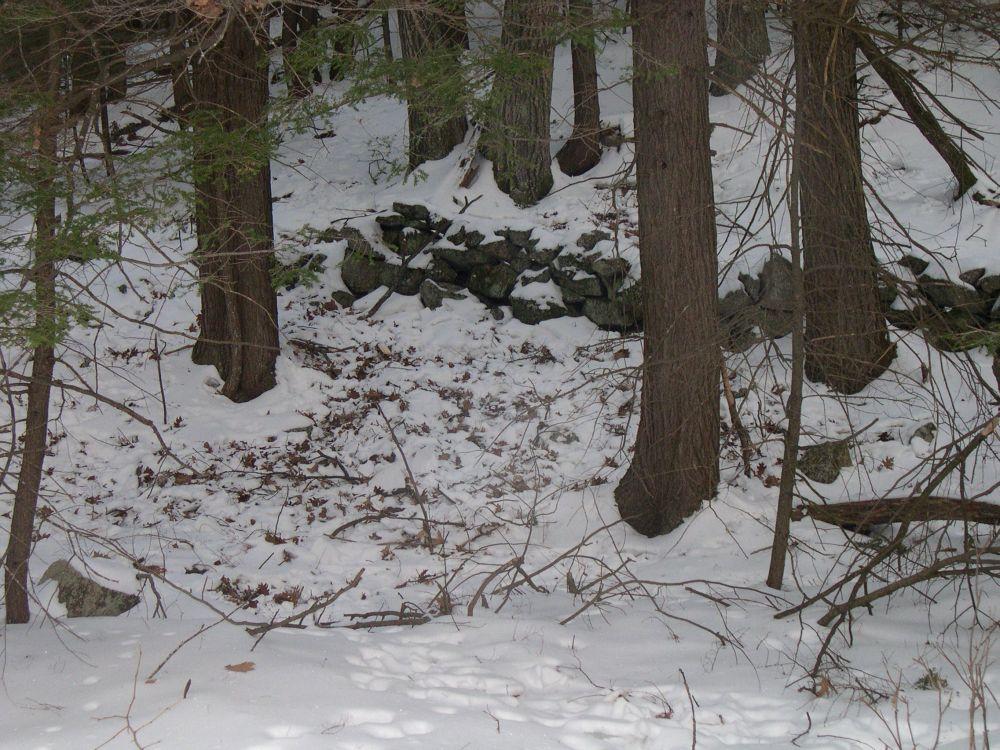
Swaths of oak leaves, acorn shells, caps and crumbs of nut meat lie exposed by pawing deer hooves. The large spreading oak canopies produced the most acorns. The white oak acorn crop was modest. Those disappeared quickly because sweeter white oak acorns contain less tannin and are less bitter.
I visualize the deer herd emerging after nightfall from the hemlocks that provide perfect cover for resting by day. I find deer beds pressed into the snow. At dusk and dawn, deer noisily break the icy crust to dig in the snow and dry oak leaves to reach acorns buried like gold nuggets beneath the frozen overburden. The tracks tell me there must be a dozen deer traveling together nightly, moving through these woods.
I’ve caught only fleeting glimpses of them on mornings past as they leap from their daybeds snorting with white tails waving. Deer trails visible even in summer lead to reliable escape routes through ledges above that shelter the valley from northwest winds. The south-facing slopes are warm on sunny days. It’d be paradise, if it weren’t for coyotes.
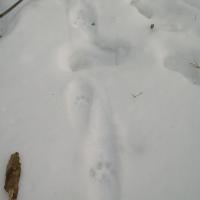
By day, turkeys work the digs, mining for acorns. Mice and gray squirrels also visit the acorn mines. Dark oak leaves absorb winter sunlight, creating warm oases in the surrounding snow. In turn, the deer, turkeys, squirrels and mice are pursued by cruising coyotes and more rarely, bobcats.
Predators play the percentages. Acorn digs are the meat section of the forest supermarket. I follow coyote tracks to fresh turkey droppings beneath a nighttime roost. Turkeys roost in tall eastfacing hemlocks to catch the first rays of sunrise. I hear turkeys flap noisily deeper into the forest. That sudden sound is startling.
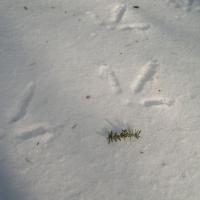
The cold emboldens wildlife. Hunger draws them closer to the house. After sunrise, I discover fresh coyote tracks behind the henhouse. A lone coyote sat on our front porch last night beneath the birdfeeders, amid the sunflower husks and tracks of squirrels and mice. Our housecat, Charlie, understands. He no longer ventures outdoors even briefly.
Wildlife travel patterns repeat annually. I venture into pre-dawn woods to follow wild neighbors and see what they might teach me. What’s changed? What remains the same? Snowshoe hares, grouse and coyotes are more numerous. Foxes, fishers and red squirrels less so. Raccoons, skunks and chipmunks are not active during bitter cold. More changes will occur with warmer temperatures and deeper February snow.
Winter is white, the absence of sounds. In art, white represents the absence of color. In contrast, science dictates white is the presence of all colors and can be scattered by a prism into a rainbow of hues.
Tracking winter wildlife seems more a science. Tracks in the snow reveal hungry creatures as if by the magic of a prism.
Yet the silence on the coldest mornings seems more like art as cold optic white is accompanied by an absence of sound. I still cannot discern if enjoying winter in New Hampshire is more art or science.
Perhaps you tell me?
.
